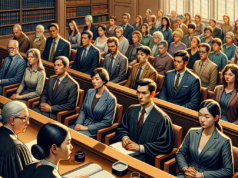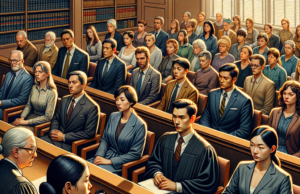The prison system in the United States and around the world has long been a subject of intense scrutiny and debate. With rising incarceration rates, overcrowded facilities, and a growing awareness of the social implications of punitive justice, there is an urgent need for reform. Recent developments in rehabilitation, technology, and restorative justice practices are beginning to reshape the landscape of corrections, offering a glimpse into a more humane and effective approach to justice. This article explores the shocking transformations currently underway in the prison system, highlighting innovative practices that aim to redefine justice.
Understanding the Current State of the Prison System: A Historical Overview
The modern prison system has evolved significantly from its origins in the late 18th and early 19th centuries, which were characterized by a focus on punishment and retribution. Over the decades, the United States has witnessed a dramatic increase in incarceration rates, particularly since the 1980s, driven by policies such as the War on Drugs and mandatory minimum sentencing laws. This punitive approach has disproportionately affected marginalized communities, leading to systemic inequalities within the justice system. As awareness of these issues has grown, so too has the call for reform, pushing for a shift from a purely punitive model to one that emphasizes rehabilitation, restorative justice, and social reintegration.
Innovative Rehabilitation Programs: Redefining Inmate Education and Skills Training
In response to the pressing need for reform, many correctional facilities are now implementing innovative rehabilitation programs designed to equip inmates with essential skills and education. These programs range from vocational training in trades such as carpentry and plumbing to educational initiatives that allow inmates to earn high school diplomas or even college degrees. Research has shown that inmates who participate in educational programs are significantly less likely to reoffend upon release. By focusing on personal development and skill acquisition, these initiatives not only benefit the individuals involved but also contribute to safer communities and reduced recidivism rates, ultimately transforming the narrative around incarceration.
The Role of Technology in Modernizing Prison Management and Inmate Monitoring
Technology is playing an increasingly vital role in modernizing the prison system, enhancing both management practices and inmate monitoring. Innovations such as electronic monitoring systems, biometric identification, and data analytics are being utilized to improve security and streamline operations within correctional facilities. Moreover, virtual reality and online learning platforms are being integrated into rehabilitation programs, providing inmates with access to educational resources that were previously unavailable. These technological advancements not only enhance the efficiency of prison management but also create opportunities for inmates to engage in meaningful learning experiences, fostering a sense of agency and hope for the future.
Restorative Justice Practices: Shifting Focus from Punishment to Healing
Restorative justice practices are gaining traction as a viable alternative to traditional punitive measures, emphasizing healing and reconciliation over punishment. This approach involves bringing together victims, offenders, and community members to engage in dialogue and collectively address the harm caused by criminal behavior. By focusing on accountability, empathy, and the restoration of relationships, restorative justice aims to repair the damage done to individuals and communities. Several jurisdictions have begun to incorporate restorative practices into their justice systems, leading to positive outcomes such as reduced recidivism, increased victim satisfaction, and a greater sense of community involvement in the justice process.
Addressing Systemic Inequalities: The Impact of Race and Socioeconomic Status
The prison system is deeply intertwined with issues of race and socioeconomic status, often reflecting broader societal inequalities. Studies have consistently shown that individuals from marginalized communities face disproportionately high rates of incarceration, often due to systemic biases in policing, sentencing, and access to legal resources. As reform efforts gain momentum, there is a growing recognition of the need to address these disparities head-on. Initiatives aimed at promoting equity within the justice system, such as diversion programs for low-level offenses and community-based alternatives to incarceration, are essential for dismantling the structural barriers that perpetuate inequality. By prioritizing social justice, the prison system can move toward a more equitable and fair approach to justice.
Future Directions: Envisioning a More Just and Effective Correctional System
Looking ahead, the future of the prison system hinges on a commitment to ongoing reform and innovation. As more jurisdictions adopt evidence-based practices and prioritize rehabilitation over punishment, there is potential for a transformative shift in how society views incarceration. Policymakers, advocates, and community members must work collaboratively to develop comprehensive strategies that address the root causes of crime, promote restorative justice, and dismantle systemic inequalities. By envisioning a correctional system that prioritizes healing, education, and social reintegration, we can create a more just and effective approach to justice that benefits individuals and society as a whole.
The ongoing transformations within the prison system signal a critical turning point in the pursuit of justice. By embracing innovative rehabilitation programs, leveraging technology, and prioritizing restorative practices, the correctional landscape is evolving toward a model that emphasizes healing and reintegration rather than mere punishment. Addressing systemic inequalities remains a crucial challenge, but with concerted efforts and a commitment to reform, there is hope for a more equitable and effective justice system. As society continues to grapple with the complexities of crime and punishment, these shocking transformations offer a promising glimpse into a future where justice is truly served.






























